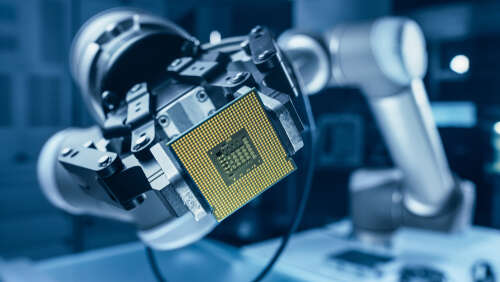
UK chip design giant Arm is reportedly planning price hikes for some of its biggest customers as it implements a new business model. The move from Arm’s parent company SoftBank is part of measures designed to increase profitability ahead of its impending IPO.

Arm is set to return to the public markets later this year, with SoftBank having chosen to list the company on the New York Stock Exchange. This has prompted SoftBank founder and CEO Masayoshi Son to look for ways to make the company a more attractive prospect for investors.
The Cambridge-based company provides designs for chips in the vast majority of smartphones, including the iPhone, and its blueprints are increasingly being used by companies building processors for servers and other enterprise devices.
How is Arm changing its business model?
Arm’s new pricing strategy will see customers billed based on the value of the final device a chip is used in, rather than the value of the chip itself.
The new pricing could be put in place as early as next year, and Arm has already been sounding major customers such as Qualcomm and Mediatek about the plan, according to the FT, which first reported the story and cites industry insiders familiar with the scheme.
Apple, which has a special royalty agreement with Arm, will not be impacted, the FT says. The changes would mainly affect the company’s Cortex A design range used in high-end smartphones.
Since SoftBank purchased Arm for £24bn in 2016, the company has been beset by sluggish growth. This led SoftBank to look to sell the company to Nvidia in 2020 in a blockbuster $40bn deal. However, widespread opposition from regulators saw the plug pulled on the takeover a year later.
When the Nvidia deal was cancelled, SoftBank announced plans to relist Arm on the public markets, and despite heavy lobbying from the UK government, the IPO will take place in the US rather than London. Son himself has said he has taken a hands-on role in setting the direction of Arm in recent months.
Arm declined to comment when approached by Tech Monitor.
Arm’s new pricing strategy is a risky move
A chipset for a 5G mobile device costs an average of $45-$50, according to figures from Counterpoint Research, and Arm currently takes royalties of 1%-2% on chips based on its designs. With the price of manufacturing a smartphone running into hundreds of dollars, collecting a chunk of these royalties instead could potentially be much more profitable.
Though charging royalties based on the finished device is common for other technology companies, Arm may face a tough task if it asks its customers to pay considerably more for the same product they already receive. It is already at loggerheads with Qualcomm, one of its longest-standing partners, over a potential licensing breach resulting from Qualcomm’s purchase of AI chip start-up Nuvia in 2021.
While Arm’s dominance in the mobile space is almost total, clients are not without other options should they decide any price changes are not to their liking. The growing maturity of the RISC-V ecosystem, an open-source, royalty-free architecture, could offer an alternative to Arm’s blueprints, and in January it was announced that Google’s Android mobile operating system will support RISC-V architecture alongside Arm and Intel’s X86.
RISC-V chips that can compete with the Cortex A and Arm’s other top-of-the-range designs are not yet on the market, but speaking to Tech Monitor last year, Gartner vice president analyst Alan Priestley said enterprise buyers are increasingly looking at alternative architectures. “A lot of companies are looking at alternate sources of IP, maybe not switching totally away from Arm, but having the option of Arm or RISC-V in their products,” Priestley said. “RISC-V was already gaining traction before SoftBank decided to try and offload Arm, and I think that has increased the focus of some of the semiconductor companies on RISC-V as an alternative.”






